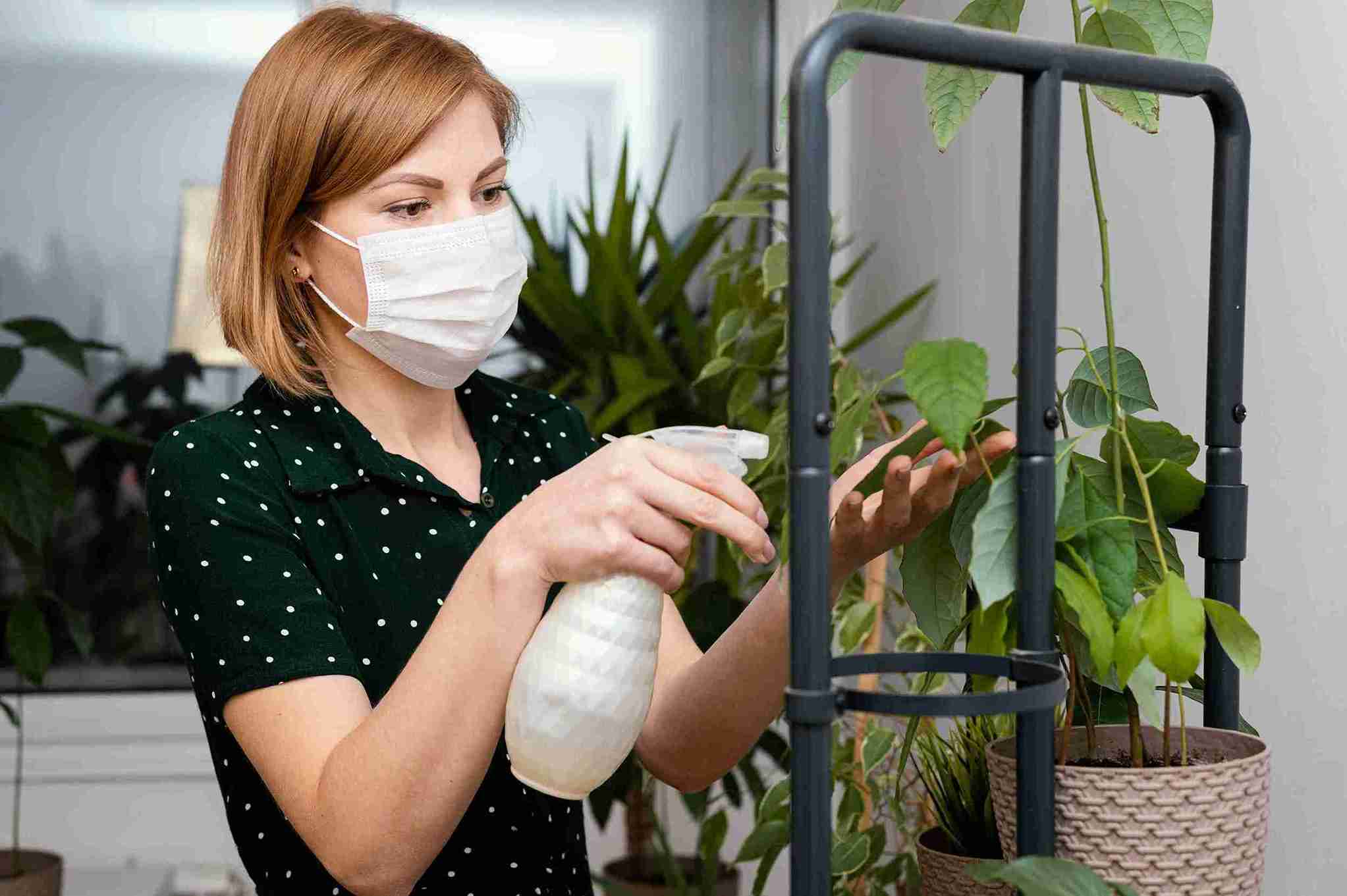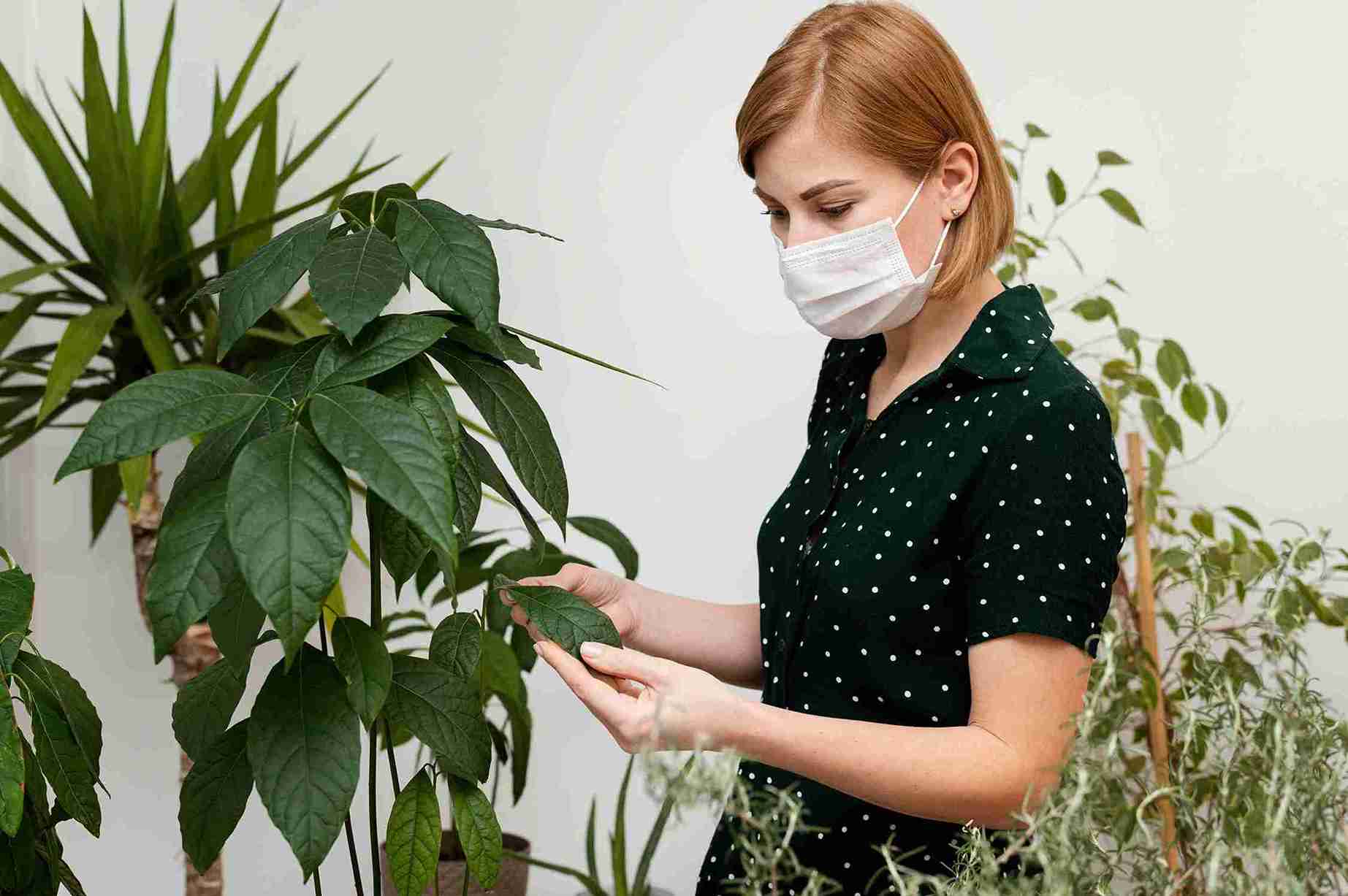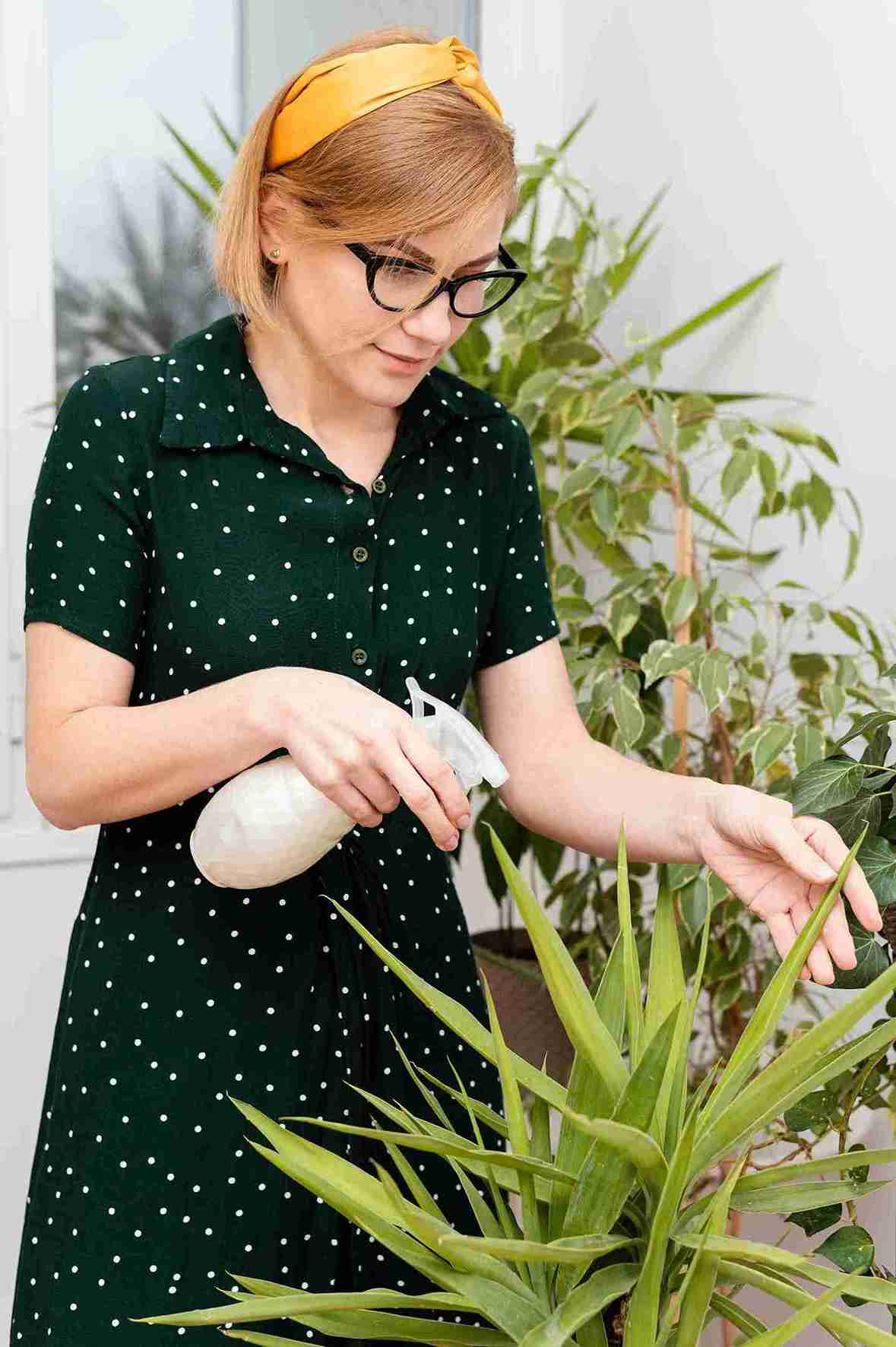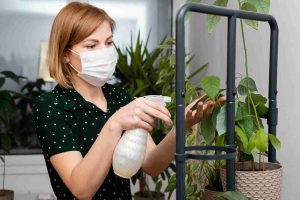Last year, I noticed tiny bugs crawling on my houseplants. Some leaves had holes, and others looked sticky. I felt frustrated because I didn’t want to use strong chemicals inside my home. Then I found something that changed everything—the best insecticidal soaps for houseplants.
At first, I didn’t know how insecticidal soap worked. But after trying a few, I saw a big difference. My plants looked fresher, the bugs disappeared, and I didn’t harm the plants or the environment. These soaps are safe, easy to use, and work well on many kinds of pests.
Now, I always keep a bottle ready for any bug problem. If you love houseplants like I do, you’ll want to know which insecticidal soaps really work. In this article, I’ll share my top picks for the best insecticidal soaps for houseplants and how they helped me keep my plants healthy and happy. Let’s dive in!

Why I Started Using Insecticidal Soaps for Houseplants
I love my houseplants and want to keep them healthy. One winter, I found bugs crawling on my favorite pothos. I panicked and didn’t know what to do. A friend told me about insecticidal soap. I had never used it before. At first, I was scared it would hurt my plants. But I gave it a try. I bought a small bottle and tested it on one leaf.
The leaf stayed green, so I sprayed more. The bugs started to disappear in a few days. I was so happy and felt proud of saving my plant. After that, I used insecticidal soap for the other plants, too. It worked on spider mites, aphids, and whiteflies. Now, I always keep a bottle nearby. I learned that it’s safe and easy to use. It doesn’t have harsh smells or strong chemicals.
It’s also gentle on leaves. Insecticidal soap became my favorite plant helper. I trust it more than other sprays. I always read the label before using it. That helps me avoid mistakes. If you love plants like me, try it once. You might love it too. It saved many of my houseplants from pests.
What Makes a Good Insecticidal Soap?
Not all insecticidal soaps work the same way. I found this out the hard way. Some soaps burned the leaves. Others didn’t kill the bugs. I learned to check the label before buying. The best soaps list active ingredients like potassium salts of fatty acids.
This ingredient kills bugs without harming the plant. I also look for products marked “safe for indoor use.” Some soaps smell too strong and make the house stink. I avoid those. I prefer unscented or lightly scented soaps. I also like soaps in a spray bottle. That makes it easy to use. I don’t want to mix things myself. I learned that soaps work best on soft-bodied bugs. They don’t work well on beetles or hard-shelled bugs.
Timing matters, too. I spray early in the morning or late in the evening. This keeps the leaves from burning in the sunlight. I also avoid using it on windy or cold days. The right insecticidal soap saves my plants. I feel good when I see clean, bug-free leaves. Finding the right one takes time, but it’s worth it. I now know what works best for my plants.
My Favorite Insecticidal Soap Brands
I love my houseplants, and I want to protect them. When pests come, I reach for insecticidal soap. These soaps help get rid of bugs in a safe way. I have tried many brands, but a few became my favorites. Let me tell you about them from my own experience.
1. Safer Brand Insect Killing Soap
Safer Brand was the first soap I ever tried on my plants. I saw tiny bugs on my plant leaves, and I panicked. A friend told me about this brand, so I gave it a shot. I bought a small bottle to test first.
- It worked great on aphids, mites, and whiteflies.
- I liked that it was ready to use right away.
- I sprayed it on the leaves, top and bottom.
- After a few days, the bugs were gone.
I liked that it didn’t hurt my plants. The smell was mild and didn’t bother me. I used it every few days until the pests disappeared. It gave me peace of mind. I now keep a bottle of Safer Brand at home all the time.
2. Garden Safe Insecticidal Soap
After good results with Safer Brand, I wanted to try another one. I saw Garden Safe at a local store and picked it up. It was cheap, so I wanted to see if it worked, too.
- I used it on my ferns and spider plants.
- It killed the bugs without hurting the leaves.
- I liked the easy spray nozzle.
- The bottle lasted me a long time.
It worked well on gnats and mealybugs. I sprayed it in the evening when the sun wasn’t strong. I noticed fewer bugs the next day. After one week, my plants looked fresh again. It became one of my go-to brands.
3. Bonide Insecticidal Soap
Bonide caught my eye at a garden center one weekend. I hadn’t used it before, but the label said it was safe for indoor plants. I decided to give it a try. I used it on my peace lily and fiddle leaf fig.
- It came in a big bottle, so it lasted a long.
- The soap felt gentle but killed pests fast.
- It worked well on scale insects and thrips.
I liked that Bonide didn’t leave spots on the leaves. I also liked how quickly it dried. I used it two times a week for a month. It kept my plants healthy and pest-free. I now recommend Bonide to my plant-loving friends.
4. Natria Insecticidal Soap
One day, I found Natria while shopping online. The reviews looked great, so I bought a bottle. I used it on my indoor herbs and small flowering plants.
- It had a clean smell that didn’t bother me.
- It killed bugs within a day or two.
- My basil and mint didn’t get damaged at all.
I loved that I could use it on edible plants. Some soaps are not good for herbs, but Natria worked well. I kept using it every few days during bug season. Now, I always keep it for my kitchen plants.
5. EarthTone Insecticidal Soap
EarthTone was recommended to me by a neighbor. She swore by it for her succulents. I decided to try it out, too. I used it on my jade plant and aloe.
- The bottle was simple and easy to use.
- It killed bugs on contact.
- My plants didn’t get burned or damaged.
EarthTone felt safe and clean. I liked the texture and the way it sprayed. It didn’t drip or leave stains. I used it once a week, and my succulents stayed bug-free. It became one of my top picks for thick-leaf plants.
6. DIY Insecticidal Soap (Homemade)
Sometimes, I make my own insecticidal soap at home. It’s easy and cheap. I mix water, mild soap, and a little oil.
- I use one teaspoon of mild dish soap.
- I add one quart of water and a few drops of oil.
- I shake it well in a spray bottle.
This mix works great on soft-bodied bugs like aphids and mites. I test it on one leaf first to make sure it’s safe. Then I spray the rest of the plant. It’s not as strong as store brands, but it’s good in a pinch. I like knowing what’s in it.

How I Use Insecticidal Soap the Right Way!
I always test insecticidal soap before using it fully. I spray a little on one leaf first. Then, I wait 24 hours to see how it reacts. If the leaf stays healthy, I spray the whole plant. I never use too much soap. A light mist is enough. I spray the top and bottom of the leaves.
Bugs hide under leaves, so I check there carefully. I wear gloves to protect my hands. I keep the room well-ventilated too. After spraying, I don’t place the plant in direct sunlight. The soap can make leaves burn. I leave the plant in the shade for a while. If I still see bugs after a few days, I spray again. I always follow the directions on the label.
That helps avoid damage. I never mix soaps unless the label says it’s okay. I also keep the soap away from kids and pets. It’s safe for plants but still a chemical. Using it the right way keeps my plants safe. I feel proud when I use it correctly. My plants stay clean, green, and bug-free. Proper use makes all the difference.
Mistakes I Made and What I Learned
When I first used insecticidal soap, I made mistakes. I didn’t test it first. One time, I sprayed too much on a sunny day. The leaves got spots and turned brown. I felt so bad. I also used the wrong soap on a sensitive plant. It lost its leaves. I learned to be more careful. Now, I always test before using. I also read the label every time.
I don’t rush the process anymore. I give the soap time to work. I also learned not to spray too often. Too much soap can harm the plant. Once a week is enough in most cases. I keep track of which plant I treated and when. That helps me avoid repeating sprays too soon. I also learned to clean the leaves after a few hours. I wipe them with a damp cloth to remove the extra soap. My mistakes taught me how to use the soap safely.
Now, I feel more confident. I don’t make those early mistakes anymore. My plants are healthier because I have learned from experience. Mistakes happen, but they help us grow. I’m glad I didn’t give up.
How I Made Insecticidal Soap at Home!
I noticed tiny bugs crawling on my houseplants last week. They looked like aphids or maybe spider mites. I didn’t want to use strong chemical sprays. So, I searched for a safer, homemade solution. I found that insecticidal soap works really well.
Making it at home was super easy. I used only three ingredients. First, I filled a spray bottle with two cups of water. Then, I added one tablespoon of liquid dish soap. I made sure it was a mild, fragrance-free soap. I also added one tablespoon of vegetable oil. The oil helps the solution stick to the bugs.
I shook the bottle gently to mix everything well. Then, I sprayed it directly on the bugs and leaves. I did this in the evening to avoid sunlight damage. I made sure to cover the undersides of the leaves, too. That’s where most bugs hide.
After a day, I saw fewer insects on the plants. I repeated the spray every few days for a week. The results were amazing. My plants looked healthier and fresher. And best of all, I didn’t use any harmful chemicals.
My Favorite Homemade Insecticidal Soap Recipe
Here’s the exact recipe I follow at home:
- 2 cups of lukewarm water
- 1 tablespoon of mild liquid dish soap (no bleach or scent)
- 1 tablespoon of vegetable oil (like canola or sunflower)
I always mix the ingredients in a clean spray bottle. I shake it gently before each use. I never spray in direct sunlight. I also avoid spraying young or delicate leaves.
If the plant reacts badly, I rinse it with plain water. But that rarely happens if I use mild soap. I always test a small leaf first before spraying it all over.
Why I Prefer This Safer Insecticidal Soap for Houseplants!
I trust this soap because it’s gentle and natural. It doesn’t harm my plants or pets. I’ve used it on pothos, peace lilies, and even succulents. It works great on soft-bodied insects like aphids and mealybugs.
I like knowing exactly what’s in my spray. Store-bought insecticides can be too harsh or smelly. This DIY version gives me control and peace of mind.
Plus, it saves me money. I already have the ingredients at home. It takes just a few minutes to make. And I feel good knowing I’m not adding toxins to my space.
Conclusion
Over time, I’ve learned which soaps work best for me. I choose different brands depending on the plant or pest. Safer Brand and Garden Safe are my top two. Bonide and Natria are great for special plants. Earth tones work well for succulents. And homemade soap helps in emergencies. All these soaps helped me keep my plants safe, green, and happy.

FAQ
Organic insecticidal soap for indoor plants
Organic insecticidal soap kills bugs without hurting plants. It’s safe for use inside your home.
Safe pest control for houseplants
Use insecticidal soap or neem oil for gentle pest control. They work well and won’t harm pets or kids.
Natural aphid killer for houseplants
Spray plants with soapy water to kill aphids fast. Repeat every few days for best results.
Eco-friendly insect sprays for plants
Eco sprays use natural oils or soap to kill bugs safely. They protect plants without hurting the earth.
Natria Insecticidal Soap Review
Natria soap kills bugs like aphids, whiteflies, and mites fast. It’s gentle and safe for indoor plants.
Bonide Insecticidal Soap Benefits
Bonide soap controls many pests and is easy to spray. It works quickly and leaves no bad smell.
Safer Brand insecticidal soap concentrate
Safer Brand concentrate mixes with water to kill soft-bodied pests. It’s strong, safe, and perfect for big plant collections.
Espoma organic insecticidal spray
Espoma spray uses natural oils to fight off bugs gently. It’s safe for both plants and your indoor space.
VPG Fertilome Natural Guard uses
Use the Natural Guard to kill bugs like mites and aphids fast. It works well on flowers, herbs, and leafy plants.
How to kill aphids on houseplants naturally
Mix water with mild soap and spray the leaves gently. This kills aphids without using harsh chemicals.
Best way to get rid of spider mites on indoor plants
Spray neem oil or insecticidal soap to remove spider mites. Keep leaves clean and moist to stop them.
Non-toxic pest control for indoor gardening
Use neem oil, insecticidal soap, or diatomaceous earth safely. They kill pests but won.
Read More: How to Prevent and Get Rid of Fungus Gnats in Indoor Plants Naturally


